
India, as portrayed in slick travel magazines is a microcosm of
a much larger, much more diverse culture. Yes, there are
five-star hotels, restaurants, and world-class resorts there but
is it really necessary to travel half way around the world for
something you probably have at home?
A trip to India,
officially known as the Republic of India, is not a vacation. It
is an experience and should not be viewed by the gentle traveler
as a picture post card event. It is nothing like a trip to
Europe. It's too vast, too ancient and too complicated. India is
sensory overload. The motivation for your visit is critical to
what you get out of it.
This is one of the oldest cultures in the world. Trying to get
an in-depth understanding of its ancient religions, culture,
and people in just a few weeks is almost impossible.
It was an ancient culture when the Europeans were still wearing
animal skins. In modern times India has been ruled by the
Portuguese, Dutch, French, and English.
The Taj Mahal is everything you have been told to expect and
more. The Ganges is an experience you won't soon forget and of
course there are the endless numbers of ancient temples. But
unless you have some inkling of what India is really like, be
ready for culture shock.
To get to the famous venues of India, a traveler must pass
through cities jammed with unbelievable traffic, noise, smog,
dirt, poverty, slums, street vendors, beggars, homeless people
and more. Even if your stay is at a upscale property, leaving
the hotel or resort for a stroll in the neighborhood can be
uncomfortable for some because of the previously mentioned
conditions.
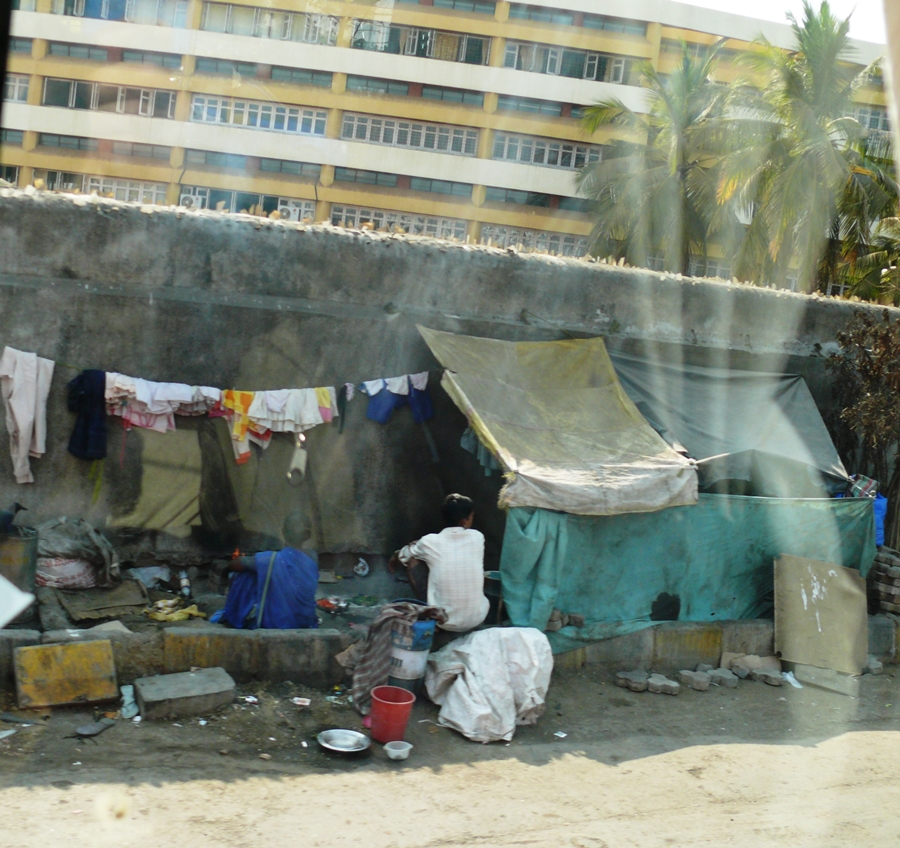 |
|
Homeless shelter on street |
India
is vast. The official population is about 1.25 billion people,
making it the most populous democracy in the world. According to
Wikipedia there are 122 major languages spoken in the country
plus 1,600 other languages, more or less, in use. English is
used in higher education and in some areas of government.
However, once you leave
the metropolitan areas for the countryside an interpreter might
be needed.
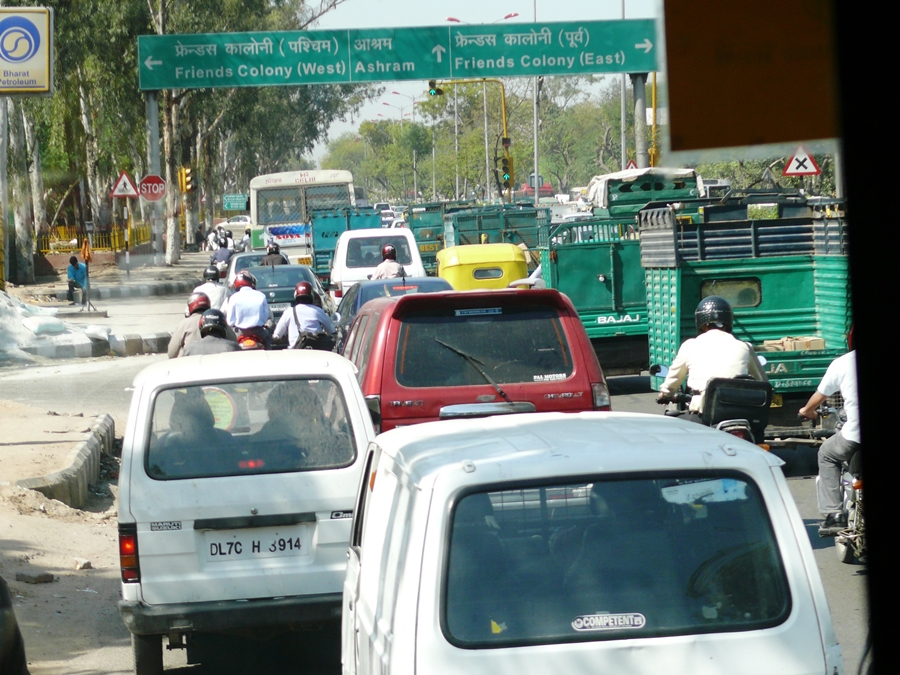
Normal
city traffic
Other things to consider when traveling there, something most of
our travel group encountered, was heartburn. Pepto Bismol was
the numberr one mint of choice until we got used to the curry
which is in almost everything one eats.
Trying to describe the different regions and cities of India is
impossible in this brief space. It is no wonder that the guide
books on India are among the thickest travel volumes in book
stores. But one thing we can all relate to is traffic. I have
been to six continents and an endless list of foreign cities and
have never experienced anything like India's roads.
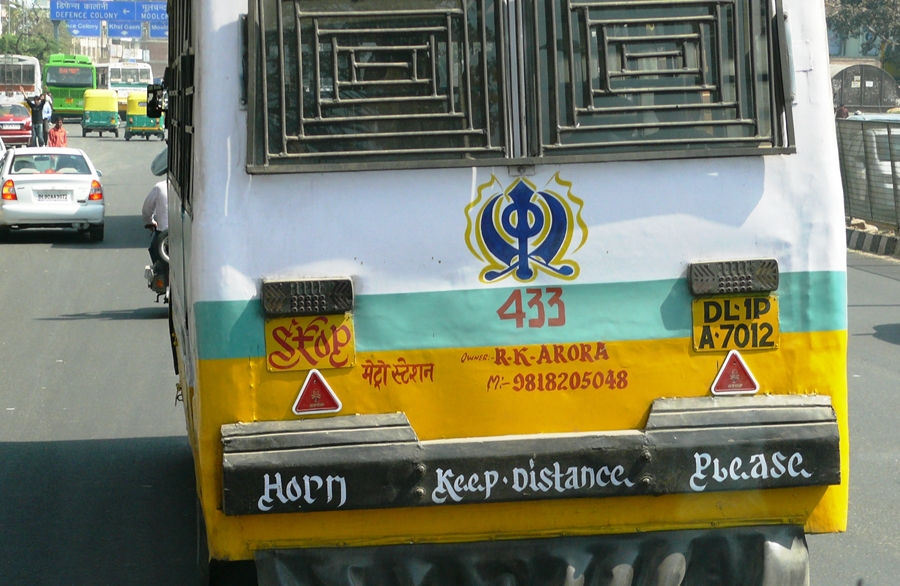 |
|
Honk...Honk |
Driving in Delhi,
Mumbai, Jaipur, Varanasi, and other major cities is something no
Westerner, nor anyone not born to the rhythm of Indian traffic,
could or should attempt. It makes rush hour traffic on I-5 on
the West Coast and I-95 on the East Coast and everything in
between look like child's play.
Honk, honk, honk, that's the prevalent sound of Indian highways.
Most commercial vehicles have artistically painted messages on
the rear that say, "Please Honk, Use Horn or Horn Please." No
self respecting driver would even think of taking his or her
vehicle out on the road without a loud working horn.
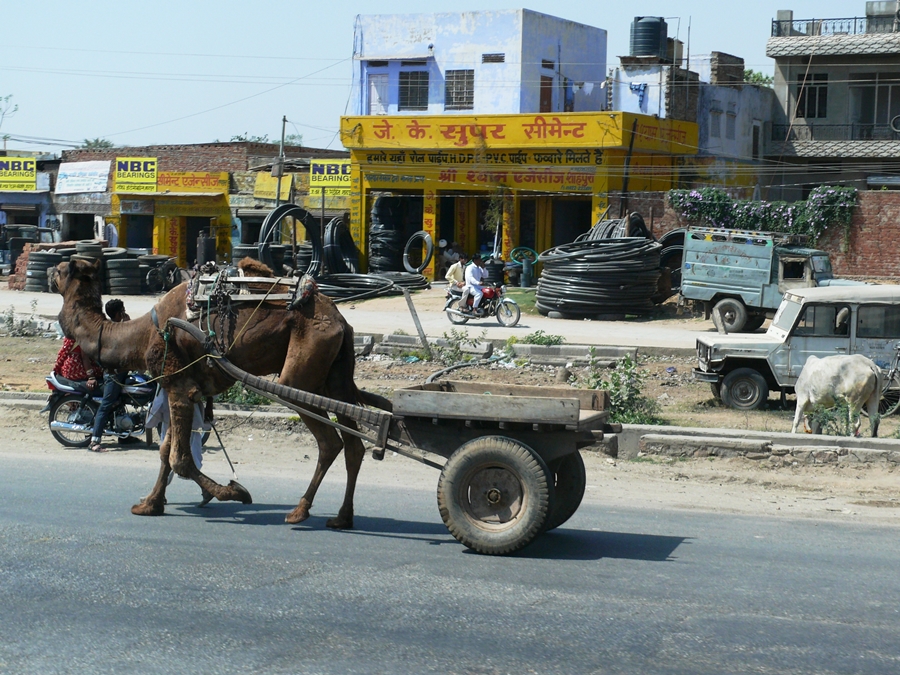 |
|
Rural road traffic |
It's understandable when you are sharing the road with
pedestrians, pushcarts, bicycles, motorbikes (carrying up to
five family members), bicycle rickshaws, motorized rickshaws,
scooters, cars, busses jammed with humanity (sometimes riding on
top) and trucks.
The big semis are prohibited from entering the cities until
after 11 p.m. They line the roads outside the cities by the
thousands waiting the witching hour.
Added to the mix on the roads outside of of the major cities are
ox carts, camel drawn wagons, donkeys, cows, goats, pigs, dogs,
the occasional elephant, and finally monkeys. Herds of cattle
and sheep being moved to grazing lands also share the roadways.
 |
|
Holy city of Varansai on Ganges
River |
On city streets or highways, the right of way belongs to whoever
gets there first. No quarter is given. Drivers will more or less
jokingly tell you that keeping your distance means two inches
for vehicles and one inch for pedestrians. Leave any daylight
between your vehicle and whatever is in front of you and someone
will squeeze in.
Vehicles regularly straddle two lanes. Passing, either right or
left, is an art. That's where the incessant horn blowing comes
in. Another little joke drivers tell foreigners is, "One has to
know the thickness of paint on their vehicle when passing
another vehicle."
What keeps everything moving, when it does move, is that
everyone knows the rules of the road. If your lane is blocked,
just switch over to the opposing lane of traffic. Oncoming
traffic will make way for you. The most dangerous thing you can
do is stop, disrupting the flow and rhythm. It can get you
injured or killed.
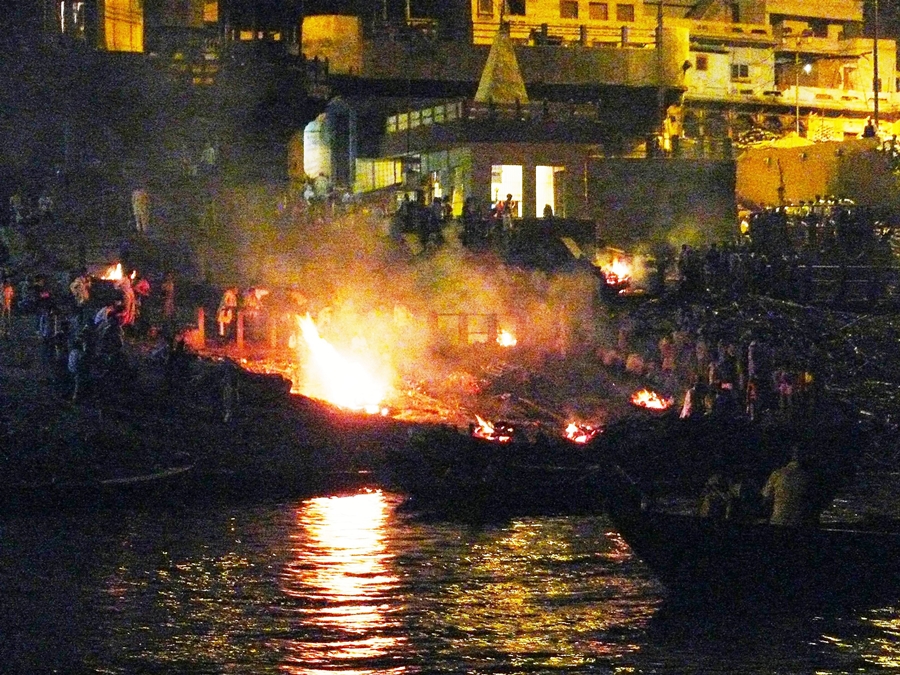 |
|
Funeral pyres on Ganges River |
|
| |
Millions of Indians travel the roads on bicycles waiting for the
day when they too can afford a scooter or car. With the growing
economy of the country, it is bound to happen in the not too
distant future. Where they will find room on the already
overcrowded road ways boggles the imagination.
The one sight that
almost every first time visitor heads to when touring India is
the Taj Mahal. You
will discover for yourself that nothing you have ever heard
about it nor pictures you might have seen can do it justice.
In the early morning light and late afternoon sun it is
pure magic.
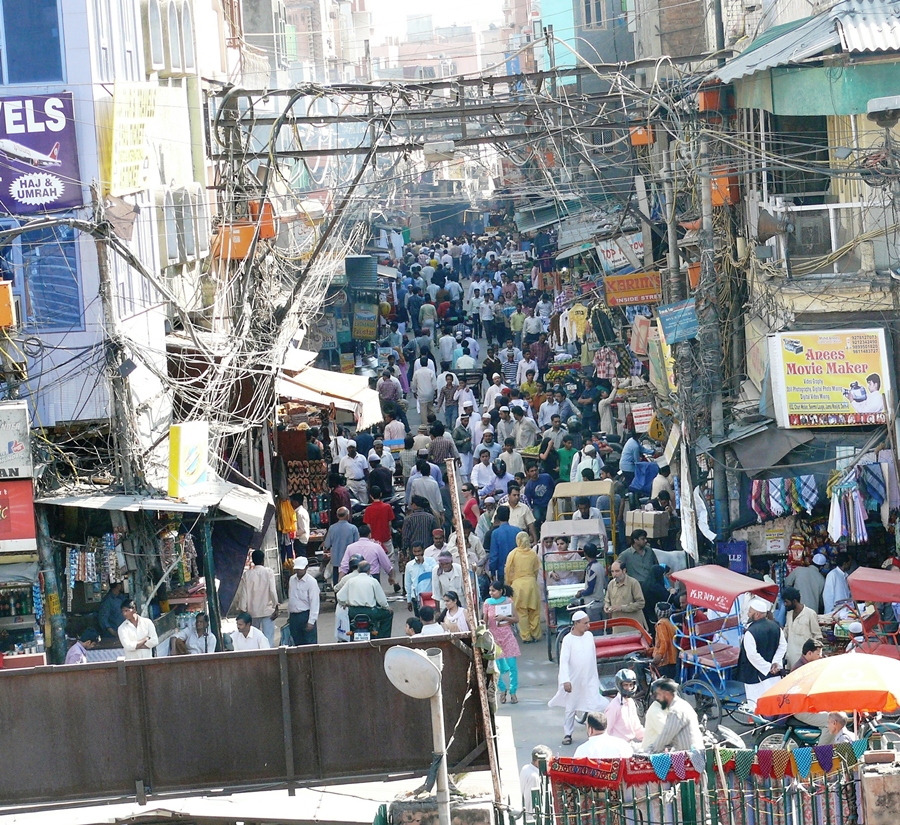 |
|
Overhead electrical power and telephone grid Old
Delhi |
The Holy City of Varansai on the banks of the Ganges River teems
with humanity day and night.
Locals purify themselves in its waters which visitors are
warned to avoid at all costs. At night the funeral pyres, which
burn 24 hours a day, reminded me of a scene from Dante's
Inferno.
"Old Delhi" has the street markets and stalls so familiar in
third world areas.
Look up from the street and you will see an electrical and
telephone distribution system whose ability to work is simply
unbelievable. Cables, so dense that they almost darken the
noonday sun, are twisted around each other and on poles so
haphazardly that it is easier to run a new wire than to try to
trace a problem in existing service.
 |
|
Sharing the road |
The old city's progeny, New Delhi, is where your calls were
routed when you needed technical assistance with your computer.
Much of this service which was outsourced to India is now being
outsourced to other countries where costs are lower.
Heading south, the traffic in the countryside is significantly
diminished but other sights greeted us.
Camel drawn carts and herds of livestock sharing the road
were common sights.
One unique thing was a large flatbed truck passing us with an
elephant as a passenger in back.
Stopping at small towns we met warm, friendly people
in restaurants and local homes along the way which included a
wedding ceremony on a farm where we were invited to join the
celebration. What we
found were people not unlike those we have met throughout the
world. They are just people with the same wants and need as
everyone else but just dressed a little more colorfully.
 |
|
Rural wedding celebration with
American guests |
Arriving in the south western part of India and the area of
Kerala on the Arabian Sea brought a stark contrast to the sights
iwe experienced in the northern cities.
Homeless people living on the streets were nonexistent. Streets
were generally clean and citizens appeared more affluent.
Wandering cows were nowhere to be seen.
This is a mainly a
Christian area and any free roaming animals would likely wind up
on someone's dinner table.
Also unique to the area are the extensive series of canals built
long ago by an Indian nobleman and today featured as the
Backwaters of Kerela.
Visitors can book passage on replicas of what used to be
called cargo carrying "rice boats."
They have all the modern
conveniences including private suites and en suite bathrooms,
and on-board dining
facilities. While touring the waterways,
boats make frequent
stops at local villages.
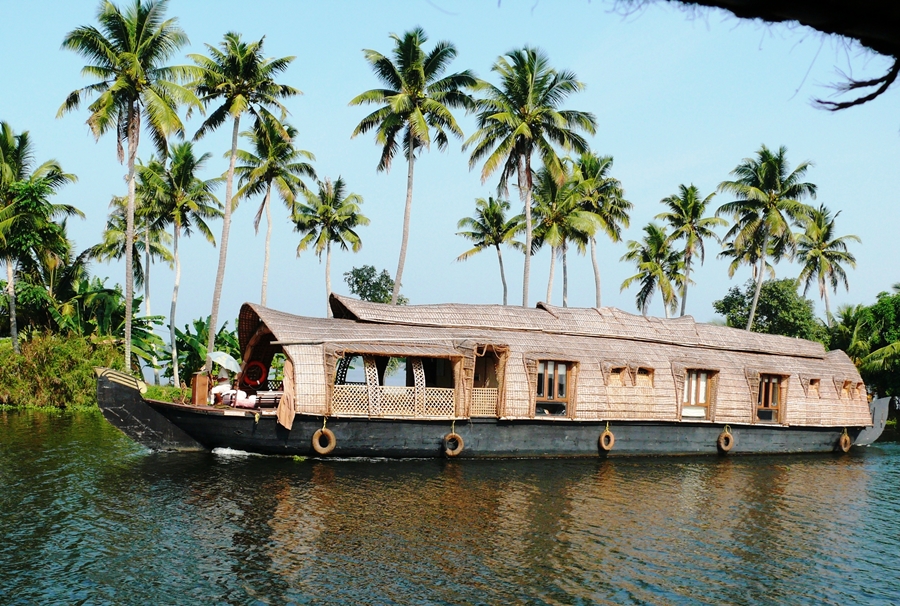 |
|
Kerala rice boat |
On this trip we did not get the opportunity to visit the area of
India's Himalayan Mountains where maps list exotic place names
like Kashmir, Tibet, Bhutan, Nepal and others.
Many more weeks would
have been added to the trip to say nothing of the expense.
At the beginning of this article I stated that the motivation
for your visit is critical to what you expect to get out of a
trip to India. Do you want to do the normal tourist thing or do
you want to go on a spiritual journey? These are totally
different experiences and something the visitor must decide on
before leaving for the Indian subcontinent half a world away.
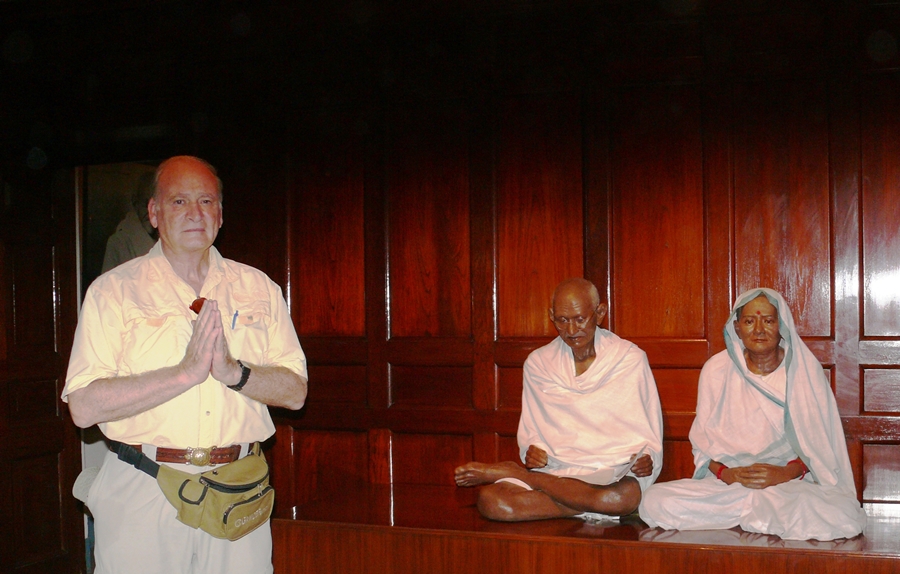 |
|
NAMASTE |
If you do visit India you will discover a country that is a riot
of color, a cacophony sounds, exotic aromas, and ancient
cultures.